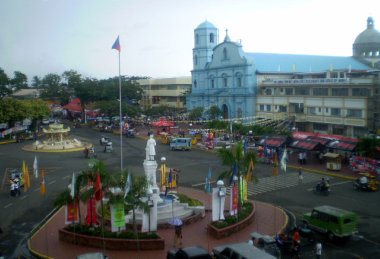Roxas City Capiz - Explore the "Seafood Capital of the Philippines"
Nine potential tourist attractions of Roxas City Capiz, the so-called places of interest, were identified through the Sangguniang Panlungsod's Committee on Tourism chaired by Vice Mayor Ronnie Dadivas in line with the city government's tourism program.
Dadivas identified these potential tourist spots as the Lighthouse in Barangay Culasi, the Moro Tower (Ford's Point) in Sitio Lawis in Barangay Baybay, the Cadimahan River, the Culajao Eco-park, the Vermi Demo Site (Vermi Compost) in Barangay Sibaguan, the Hortus Botanicos in Barangay Milibili, the Capiz National High School, the birth place of President Manuel Acuña-Roxas in Zamora corner Rizal Streets and the Balay Kapisnon on McKinley Street.

Roxas City Capiz, Philippines
The Vice Mayor's office facilitated a one-day tour to these heritage sites, cultural landmarks and other potential tourist attractions. The participants were later asked to share their insights, observations and recommendations to improve certain destinations.
Dadivas also disclosed the "beautification" of Arnaldo Boulevard in Roxas City Capiz, it being the show window of the city. Already, palm trees have been planted at the center of the road. More plants of various species will be planted on both sides of the boulevard.
During the tour, the first place to be visited was the Lighthouse near the Philippine Coast Guard Station in Barangay Culasi. After the short trek, the group negotiated the 36-step ladder leading to the Lighthouse peak or the viewing area.
The Moro Tower at Ford's Point in Barangay Baybay was the second site visited. Like the Lighthouse, the elevated location of the Moro Tower afforded the group a glance of the majestic view of the Visayan Sea and the long coastline of Baybay beach.
Next stop was the Cadimahan River. From the boat station in Barangay, the group took off from a floating Cabaña being towed by fishing motor boat.
The entire river tour took two hours to complete, with members of the Lawis Baybay Small Fisherfork Association of Roxas City Capiz (LABSFAR) giving entertainment and information on the various marine species found in the area as well as on the importance of keeping the river free from pollution and other illegal structures.
The fourth destination was the Culajao Mangrove Eco-Park, which was adjudged as the Best Eco-Tourism Product in Western Visayas during the Regional Tourism Assembly.
From the park's designated area, the group proceeded to the station and boarded the floating Cabaña that can accommodate 30 persons.
Manually maneuvered by crews aided by long bamboos, the trip to the main station of the Eco-Park took around 25 minutes.
There was an orientation on how the EcoPark was conceptualized and transformed into reality by members of the Katunggan sa Culajao Salbaron Association (KACUSA) Inc.
The group's next visit was the old ancestral house of President Manuel Acuña Roxas in Zamora corner Rizal Sts.
A Roxas relative, lawyer Mike Albar, played host and tour guide. There had been negotiations for the government to acquire the property and transform it into a cultural landmark.
The group's sixth destination was the Vermiculture project of the Roxas City Capiz Agriculture Office in Barangay Sibaguan.
Hortus Botanicos in Barangay Milibili was the next place explored by the group where plants of different species are grown.
The last two places visited were the Capiz National High School, which is one of the oldest schools in the city used as a major garrison by the Japanese Imperial Army during the war and the Balay Kapisnon on McKinley Street.
Strategically located at the foot of the historic Capiz Arc Bridge, the Balay Kapisnon, which started its operation in 1997, also houses the City Tourism and Development Office and the Roxas City Capiz Multipurpose Cooperative, Inc. (SSH'10 Publicity & Promotions Committee)


